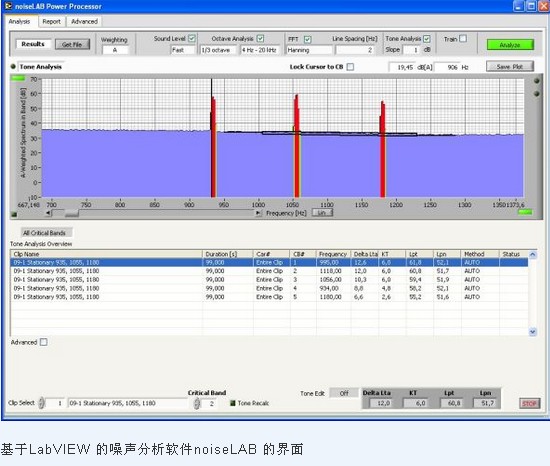challenge:
Create a scalable, cost-effective system to test the effectiveness of the new design, which is designed to reduce the noise generated by commercial jets during take-off, landing, and continuous flight.
solution:
Use NI's PXI controllers, chassis, dynamic signal analyzers, and LabVIEW software to design a scalable, distributed test system with rigorous timing and synchronization for phased array data during low-altitude flight testing collection.
"With NI's hardware and software platforms, we can create a cost-effective, high-end system that distributes the acquisition system across multiple chassis and tightly synchronizes all channels."
The operation of large-scale electromechanical equipment has provided convenience for human beings, but the noise they bring during operation has also seriously affected people's lives. Properly measuring and locating noise is a prerequisite for noise reduction. NI offers a variety of noise measurement solutions. For example, DELTA and Boeing chose NI LabVIEW software and PXI platform to implement noise test systems for wind turbines and aircraft.
In today's society, noise is everywhere. Large equipment, including automobiles and airplanes, cause a lot of noise when they are running, which seriously affects people's work and life. To this end, the relevant departments have proposed a series of noise emission standards to limit the generation of noise. The premise of noise reduction is the correct measurement and location of noise. As an expert in the field of acoustic vibration, NI has been helping engineers solve noise monitoring problems.
Developed noise measurement and positioning system for Boeing
Founded in 1916, Boeing produces a wide range of civil and military aircraft and is the world's largest aerospace company. All kinds of passenger and cargo planes manufactured by Boeing are sold all over the world. Because the aircraft will bring a lot of noise during take-off, landing and flight, it seriously affects the surrounding environment and has attracted the attention of the government. To meet increasingly stringent noise standards, Boeing is constantly improving its aircraft design to minimize noise.
To reduce the noise emitted by commercial jets during take-off, landing, and continuous flight, Boeing needed to test new noise reduction technologies applied to its aircraft. “We need a test system that can perform phased array acoustic imaging during the test to help us determine the noise points during the takeoff process. The test system architecture must be distributed, it can be extended to one or more channels. At the same time, strict timing and synchronization are maintained between the channels. In addition, the system is flexible and accurate and can be upgraded. Based on the above requirements, the NI PXI software and hardware platform provides a satisfactory solution for Boeing. Boeing uses more than 600 base microphones to equip its test systems, which are mounted in a custom spiral at the end of a 250-foot-wide, 300-foot runway area. When the 777-300ER aircraft flies overhead, the PXI dynamic signal acquisition card is used to capture the noise it emits, immediately recover and process the data, and then obtain an acoustic image of the aircraft. A data processing computer cluster is connected to the host computer via a Gigabit network to perform real-time analysis of these data and images. In a typical test cycle, the aircraft flies through the microphone array approximately every 6 minutes. During this cycle, the system can upload previously acquired data while preparing to acquire more new data. “We did more than 300 data acquisitions in a single test, and we got 78 minutes of low-altitude flight results, and the total amount of data exceeded 1T bytes.â€
"Using NI hardware and software, we were able to create a low-cost, high-end system: it can distribute the acquisition system in multiple chassis, strictly synchronize all channels, and provide all systems with a large number of channels. The channel provides full bandwidth and allows for an unlimited number of channels to expand." With this system, Boeing has successfully improved the design of the original 767 passenger aircraft and applied it to the new Boeing 787 with less noise and more comfort. In the passenger plane.
Wind turbine noise monitoring system
In recent years, the intensification of environmental problems has led humans to start looking for more environmentally friendly energy sources. Wind energy is one of the fastest growing. Wind turbines convert wind energy to electrical energy, which facilitates the use of green energy by humans. However, the noise generated by wind power plants also affects the living environment of the surrounding residents. With the introduction of the unified measurement standard for wind turbine noise emissions, IEC61400-11:2002, wind farms must also take into account the requirements for noise reduction.
One of NI's partners: DELTA, Denmark, implemented a wind turbine noise measurement system based on the NI PXI station. The NI PXI-4472 dynamic signal acquisition module is the hardware core of the measurement system. DELTA captures the sound signal at a specific frequency acquired by the microphone through the 4472. At the same time, the microphone is mounted on a circular plate on the ground and covered with an IEC-compliant windshield. The windshield reduces the wind speed around the microphone and the wind induced noise inside the microphone, further increasing the signal-to-noise ratio at low frequencies. The measurement software platform noiseLAB is developed using LabVIEW. The software enables the recording of sound data and the measurement of parameters such as octaves and tones required by the IEC standard. Tones can also be defined in accordance with the ISO 1996-2 standard. "PXI-based hardware platform-based systems can reduce costs and achieve high channel counts. In addition, we use the LabVIEW graphical development environment to implement our own noiseLAB, which is simple and efficient."
Establish a noise detection platform to “quiet†the living environment
In the design of electronic and mechanical equipment, it is ideal for every engineer to reduce noise as much as possible. NI has helped companies such as DELTA and Boeing successfully implement noise measurement and positioning, and is well prepared for future noise reduction studies. Helping customers quantify and solve problems is the goal of every NI engineer.


Author:
James Underbrink - Boeing Aero/Noise/Propulsion Laboratory
industry:
Aerospace
product:
PXI-6653, PXI-4462, LabVIEW, PXI-PCI8336, PXI-6651
Trench Cover,Trench Drain,Drain Cover,Steel Trench Covers
Hunan Furui Mechanical and Electrical Equipment Manufacturing Co., Ltd. , https://www.thresher.nl